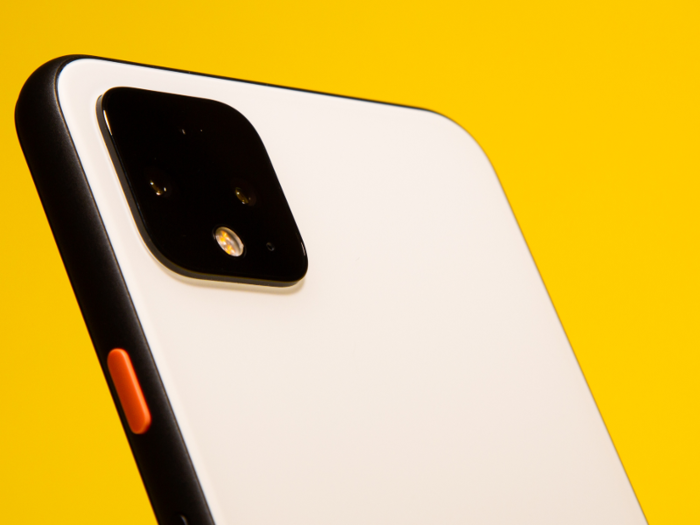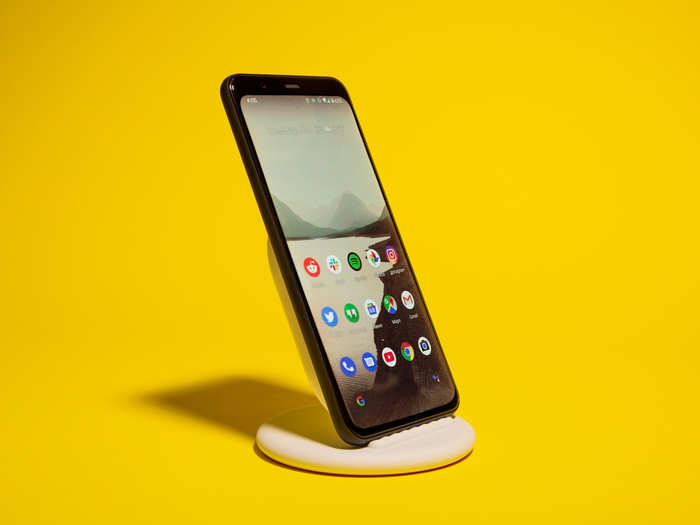- Home
- slideshows
- miscellaneous
- I've been using Google's new Pixel 4 for almost a week - here are the best and worst things about it so far
I've been using Google's new Pixel 4 for almost a week - here are the best and worst things about it so far
The Pixel 4's face unlock feels incredibly fast.
And its Night Sight mode for shooting photos in the dark is still fantastic.

If you often find yourself attempting to take photos in dark scenarios — like a dimly-lit bar or restaurant — then you'll probably be impressed with the Pixel's Night Sight.
During my side-by-side testing, I found that the Pixel 4 outperformed the iPhone 11 Pro's night mode in most scenarios, especially when shooting outdoors in the evening. In general, the Pixel 4 felt like it was able to focus more quickly in the dark, and produced images that were in some cases brighter and sharper than the iPhone's.
That being said, Night Sight is also available on older phones like the Pixel 3, the less expensive Pixel 3a, and Pixel 2. So if you already have an older Pixel device, you don't need to upgrade to take advantage of that functionality.
However, Google has made some improvements to the Pixel 4's camera that are worth acknowledging. The Pixel 4 now has two main cameras — one 12.2-megapixel lens and a 16-megapixel telephoto lens for zooming — a feature that has long been a staple for flagship smartphones. The Pixel 3, comparatively, only has one rear camera. With the Pixel 4, you can a also adjust highlights and shadows at the same time while shooting, which you can't do on the Pixel 3.
As always, the Pixel 4's software feels clean and minimalist.
Google's Pixel phones run on a clean version of Android that doesn't add any unnecessary extras to the user interface, making it feel slick and easy to use.
That's always been the case with Google's own smartphones, even dating back to the Nexus line from years ago. While Samsung has improved its software to make it feel simpler and easier to use compared to older devices, it's still not quite as simple as Google's software.
Plus, I find the Google Feed located to the left of the home screen to be much more useful than Samsung's Bixby Home and Apple's Today View on the iPhone. The information in Google's feed is more in line with my tastes and preferences and is usually more specific to my interests. That's likely because Google has the advantage of knowing my search tendencies, but it's still useful nonetheless.
The Pixel 4's matte edges make it feel easy to grip without a case.
If you're anything like me and prefer using your phone without a case, you'll appreciate the Pixel 4's matte edges. This design choice on Google's part makes it much easier to grip the phone without dropping it if you're not using a case — especially considering the black model I've been testing has a glossy back that can feel slippery.
The Pixel 4 may not best rivals like Samsung when it comes to design — after all, the Galaxy S10's curved edges and all-screen front make it look more elegant than most devices out there. But the matte grip feels like a practical addition that could possible prevent accidental drops and slips.
With the Pixel 4, I no longer have to rush to silence my alarm in the morning.
I don't ever find myself using Motion Sense to skip through songs or otherwise manipulate the phone hands-free. But I have found another use case that feels helpful and practical — automatically lowering the volume of my alarm.
Because the Pixel 4 can tell when you're reaching for your phone, it can proactively decrease your alarm as you extend your hand toward the device. Considering I'm usually scrambling to grab my phone and turn down the volume when my alarm blares each morning, I found this to be a very valuable addition.
It's features like this that make me interested in what else Google plans to do with Motion Sense in the future.
But the Pixel 4 lacks an ultra-wide-angle camera, a feature that I've come to love on the iPhone 11 Pro and Galaxy S10.
While many camera upgrades on smartphones have seemed incremental in recent years, the addition of an ultra-wide-angle camera has felt like a more significant step forward — much like night mode and portrait mode.
It makes it possible to capture photos with a significantly wider field of view without having to step backwards or coerce people to squeeze together to fit in the frame.
That's why it was disappointing to learn that the Pixel 4 would not have an ultra-wide-angle camera, with Google instead opting for a telephoto zoom lens. In my daily experience, I usually find myself taking advantage of the iPhone's ultra-wide-angle lens more often than its telephoto lens, since I'm typically snapping photos of broad scenes rather than a subject that's too far away.
And the phone's battery life also feels like it's lacking.

With the Pixel 4, I was typically able to get through an entire day without scrambling for a charger. While that's certainly acceptable, I'm used to getting much more out of other flagship smartphones like the iPhone 11 Pro, and even the cheaper Pixel 3a XL.
The iPhone 11 Pro lasted me for a day and a half when I reviewed it last month, while the less expensive iPhone 11 was on pace to last for more than a full day. The Pixel 3a XL — which at $480 is noticeably cheaper than the $700 iPhone 11, $1,000 iPhone 11 Pro, and $800 Pixel 4 — lasted for a full day and then until 5 p.m. the following next day. The Pixel 4, by comparison, only had 12% of its battery left by the time I went to bed after a full day of use.
The Pixel 4 also doesn't come with earbuds, which is inconvenient.
If you don't already own a pair of USB-C headphones or wireless earbuds, you may be out of luck when it comes to listening to music on the Pixel 4. Google's new phone doesn't come with earbuds or an adapter for plugging your 3.5mm earbuds into the Pixel's USB-C port. That seemed like an odd choice considering rivals like Apple and Samsung include headphones in the box.
Overall, the Pixel 4 stands out for its great camera and slick software.
The Pixel 4 continues to deliver on the camera quality that's come to be expected from a Pixel phone, especially when it comes to shooting in the dark. Plus, the Pixel still offers the best software experience of any Android phone in my opinion, particularly because it's simple and has Google's intelligence baked in.
But its lack of an ultra-wide-angle camera and shorter-than-expected battery life are hard to overlook. That's especially true since the much less expensive Pixel 3a XL offers a similar experience and can last longer on a single charge.
The Pixel 4 seems to be more about laying the groundwork for Google's broader ambitions when it comes to mobile phones. Improvements to the Google Assistant, combined with the Motion Sense technology that can proactively accomplish tasks like lowering your morning alarm before you even touch the phone, signal that Google is likely focusing more on infusing intelligent into its gadgets than anything else.
Popular Right Now
Popular Keywords
Advertisement